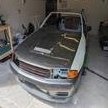Trust Turnflow Intercooler
Announcements
-
Similar Content
-
Latest Posts
-
There's no way that we can tell what they were for because they are not stock. Somebody had something installed that needed an earth and took it 98% out.
-
Hey SAU, I pulled my fascia apart to remove my cluster and found these snipped grounded wires, and a black wire off to the side. I was wondering if anyone knew what these were for? To note: My headunit is not powered and has not been since I purchased the vehicle the cigarette lighter was not hooked up either, unsure if this has anything to do with it?
-
Hello all I've been lurking around and reading many threads for quite some time, so I figured I may as well join in. I recently picked up a R33 GTR 3 V-SPEC RISERVATA that’s mostly stock. The car has always been a bit of a dream for me, and now I’m slowly starting to plan the next steps — nothing too crazy yet, but I’d like to keep it clean and responsive while pushing a bit more power.






Recommended Posts
Create an account or sign in to comment
You need to be a member in order to leave a comment
Create an account
Sign up for a new account in our community. It's easy!
Register a new accountSign in
Already have an account? Sign in here.
Sign In Now